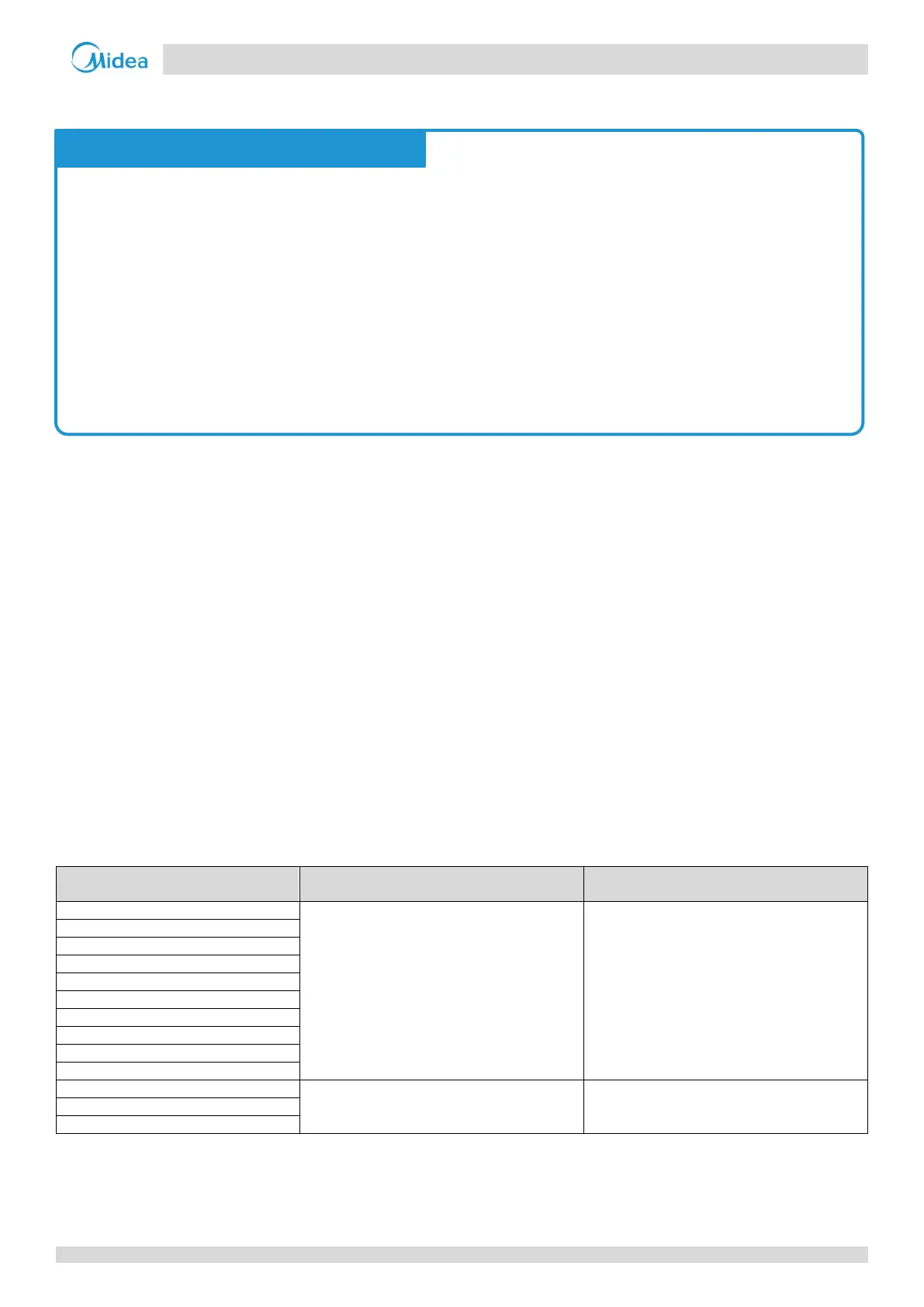VC Pro VRF 50/60Hz
177
Part 3 - System Design and Installation
6.6 Watertightness Test and Water Flow Test
Once installation of a drainage piping system is compete, watertightness and water flow tests should be performed.
7 Insulation
7.1 Refrigerant Piping Insulation
7.1.1 Purpose
During operation, the temperature of the refrigerant piping varies. Insulation is required to ensure unit performance and
compressor lifespan. During cooling, the gas pipe temperature can be very low. Insulation prevents condensation forming
on the piping.
7.1.2 Selecting insulation materials
Use heat-resistant polyethylene foam for the liquid pipes (able to withstand temperature of 70°C), and polyethylene foam
for the gas pipes (able to withstand temperature of 120°C). Reinforce the insulation layer of the refrigerant piping based on
the installation environment.
7.1.3 Thickness of insulation
Minimum thicknesses for refrigerant piping insulation are specified in Table 3-7.1. In hot, humid environments, the thickness
of insulation should be increased over and above the specifications in Table 3-7.1.
Table 3-7.1: Refrigerant piping insulation thickness
Minimum insulation thickness (mm)
Humidity < 80%RH
Minimum insulation thickness (mm)
Humidity ≥ 80%RH
Watertightness test
Fill the piping with water and test for leakages over a 24-hour period.
Water flow test (natural drainage test)
Slowly fill the drainage pan of each indoor unit with at least 600ml of water through the inspection port and check
that the water is discharged through the outlet of the drain piping.
Caution
The drain plug in the drainage pan is for removing accumulated water prior to performing indoor unit
maintenance. During normal operation, the drain should be plugged to prevent leakage.

